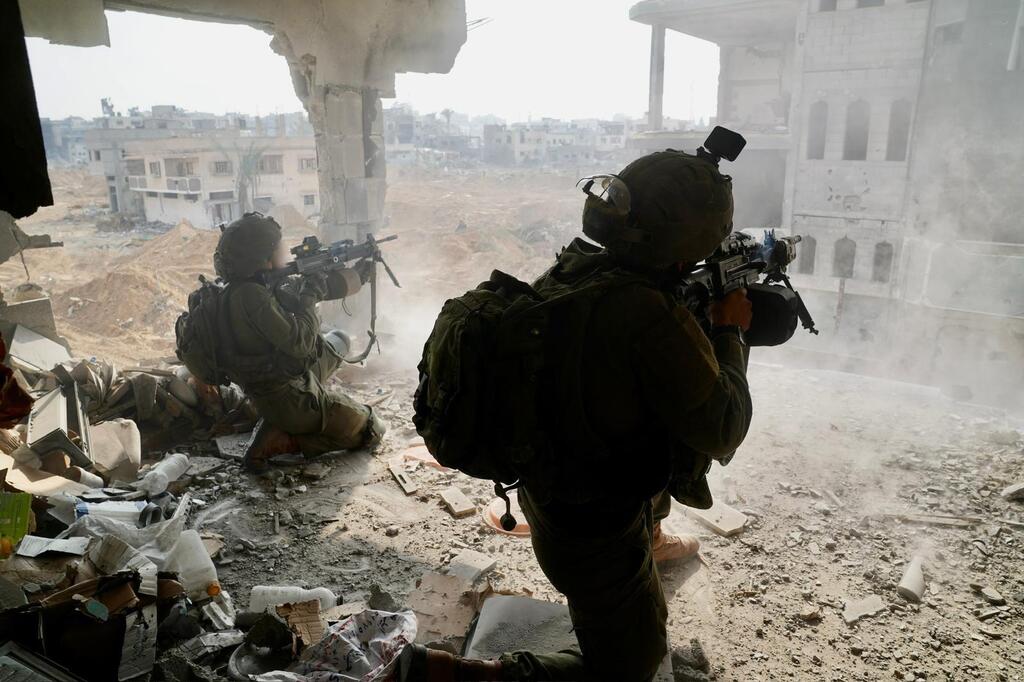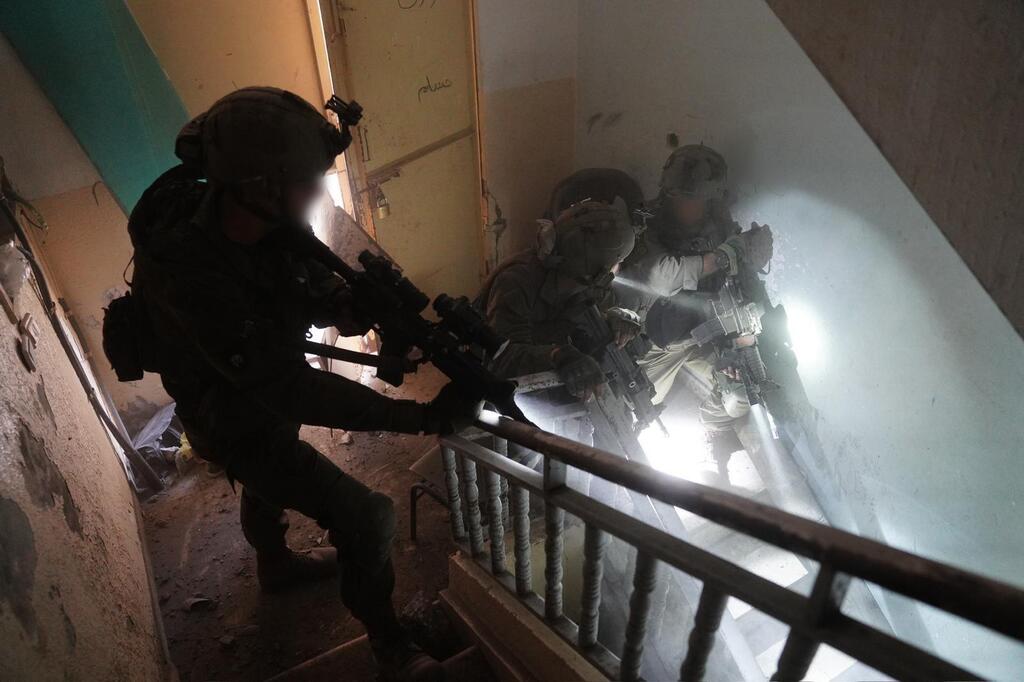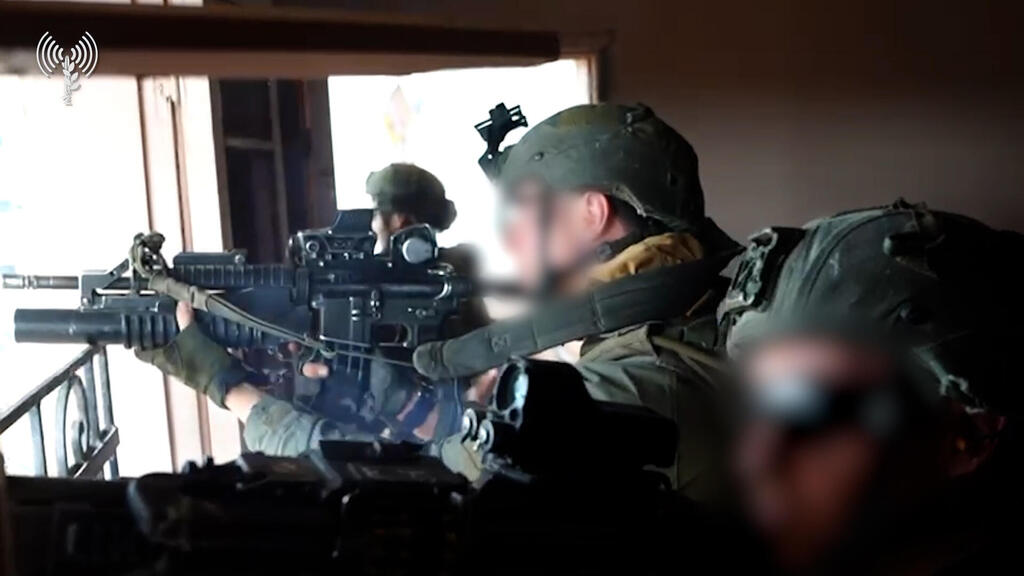During a weekend night march, the Paratroopers Brigade combat team engaged in battle in the Khan Younis area of the Gaza Strip. The troops, returning from several days of rest in the rear, had managed to strike at terrorists and destroy tunnels, as had the other six brigade combat teams operating under the 98th Division and its commander, Brig. Gen. Dan Goldfus.
More stories:
To the best of my recollection, this is the first time in the history of the IDF and Israel's wars that a division commander has deployed such a large force array, especially in a relatively confined combat zone.
3 View gallery


Paratrooper Brigade combat team operating in Khan Younis, southern Gaza Strip
(Photo: IDF Spokesperson's Unit)
The main reason for this is the desire to tighten the screws on Hamas leader in the Gaza Strip, Yahya Sinwar, and his close associates who are underground with him, to accelerate the negotiation process for the release of the hostages.
Another reason is the desire to quickly conclude the "intense fighting" phase, allowing brigades and divisions to move on to other objectives outside of the Gaza Strip, including rest and regrouping or new operational tasks, such as combat in the north if and when it arises.
An additional reason is the desire to comply with the American demand to swiftly end the intense fighting phase and move on to clearing out Hamas' lower-level underground infrastructure. This would then allow for the increased entry of humanitarian aid, to reduce starvation and disease among the non-involved population concentrated in the shelter areas of the southern Strip.
However, as mentioned, the primary goal is to increase pressure on the senior leadership of Hamas in Gaza. The intention is to make it clear to Sinwar that not only is he trapped and targeted, with the military capabilities of his organization eroding around him, but also his hopes of remaining a significant factor in the Strip are fading.
Maglan special forces unit troops operating in Khan Younis, southern Gaza Strip
(Video: IDF Spokesperson's Unit)
As the IDF completes its operational takeover of the Khan Younis and central Gaza camps area, Sinwar may at best remain alive underground for an indefinite period. The hostages will ensure his survival, but his influence will wane until it zeroes out.
As the IDF's military operation in the Khan Younis area progresses, more and more tunnels will be destroyed, more and more senior operatives with whom he has communicated will disappear. Whether because their communication lines have been cut, they have fled or they have been eliminated.
In a few weeks, Sinwar will be unable even to maintain the appearance of control in the Strip. He may survive for now, but he will remain as cut off as the hostages around him, and he knows that if he harms them, his days are numbered.
Sinwar is not afraid of dying, but he desires a meaningful end that advances the religious and ideological goals of Hamas and turns him into a "martyr." He does not want a humiliating and prolonged demise like Saddam Hussein, who was pulled from his hiding hole near his hometown of Tikrit, underwent a dental check in front of a camera by an American military doctor as if examining an animal, and was eventually hanged after a trial in Baghdad.
Conversations with security sources suggest that increasing military pressure in the Khan Younis area is meant to convey to Sinwar that if he harms the hostages, his end will be even worse.
Senior security officials, led by Defense Minister Yoav Gallant, want the military pressure in Khan Younis to lead Sinwar to agree to a hostage release deal in exchange for his survival and the preservation of his ability – even theoretically – to advance Hamas' objectives.
He believes he won on October 7 and wants to reap the benefits of that victory, perhaps from a place of exile outside the Gaza Strip. This outcome or a similar one can only be achieved through the release of all the hostages. Credible Israeli sources argue that they will be able to reach him even if he manages to stay alive.
Gaining points on the legitimacy front
The increase in military pressure through the deployment of significantly reinforced manpower in the Khan Younis area aims to complete the operational takeover of the territory. This move requires many forces that will engage as much as possible with Hamas terrorists and rapidly destroy the organization's above and below-ground combat infrastructure.
Once this phase of fighting and territorial takeover is completed, units such as the Givati, Golani and Paratroopers brigades can be released for other duties. Selected reserve brigades will be able to significantly release their personnel to civilian life and running the economy.
Ending the intense fighting will also help us on the "legitimacy front." The Americans and public opinion in Europe are pressing to increase humanitarian aid to the Gaza Strip. The non-involved population that fled to shelters is beginning to show real signs of starvation and the spread of epidemics, which not only increases criticism of Israel but also endangers the forces operating in the Strip and Israeli citizens as well.
The introduction of food, water, medicine and medical teams is required to curb these phenomena and stabilize Israel's standing in the global public opinion. However, as long as the intense fighting phase is ongoing, there's no chance that aid convoys will reach their destination on time and not be looted by the masses or Hamas operatives.
In light of all this - increasing pressure on Sinwar regarding the hostages, the need to release forces from the Strip back to civilian life and responding to American requests for humanitarian aid – the IDF has decided to concentrate effort and many forces in a relatively small area under one command, which can streamline their movement and reduce friendly fire incidents.
It's possible that soon, the IDF will bolster the number of deployments and perhaps even add a division command to quickly complete phase B of the fighting in central and southern Gaza Strip.






